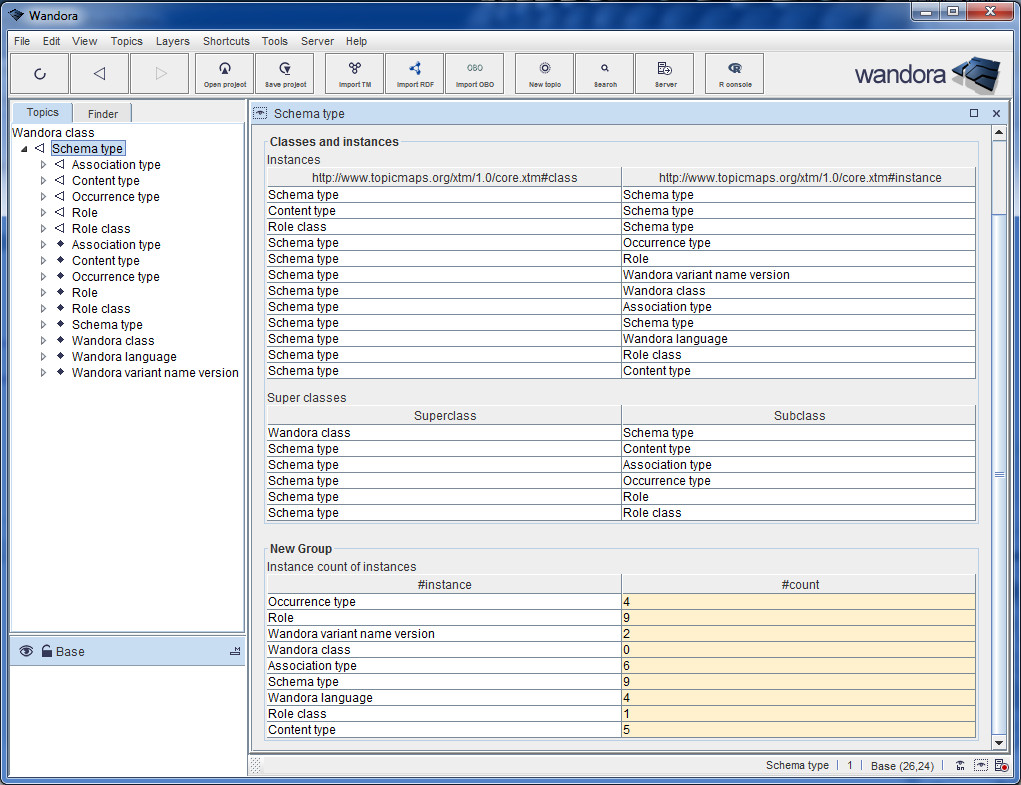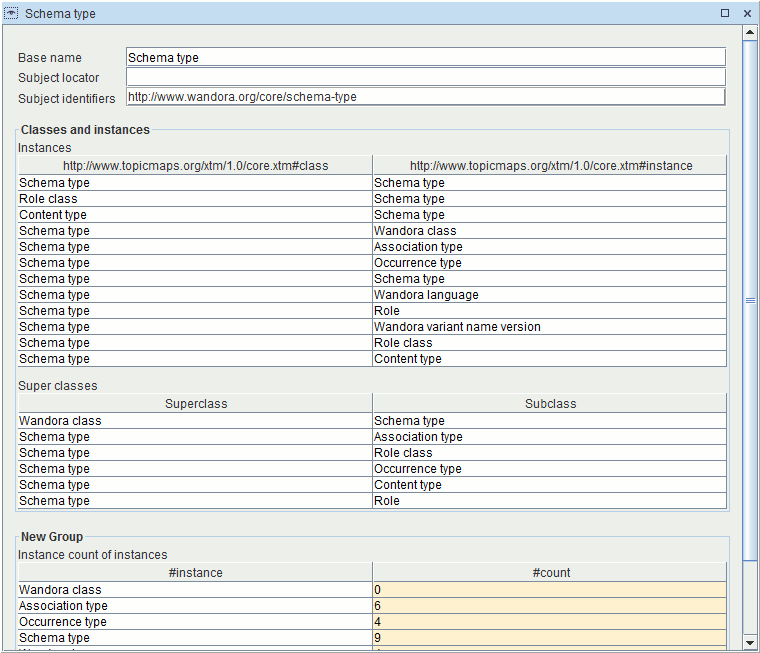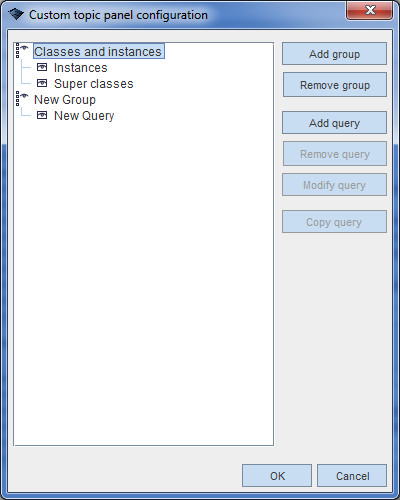Custom topic panel
| Line 1: | Line 1: | ||
| − | Custom topic panel is one of several available [[topic panels]] in Wandora. As the name suggests the custom topic panel can be customized. Custom topic panel uses Wandora's [[Query language]] scripts to select information viewed in the panel. Custom topic panel consists of information tables and table groups. | + | Custom topic panel is one of several available [[topic panels]] in Wandora. As the name suggests the custom topic panel can be customized. Custom topic panel uses Wandora's [[Query language]] scripts to select the information viewed in the panel. Custom topic panel consists of information tables and table groups. |
Next screen capture views custom topic panel with the '''Schema type''' topic. The custom topic panel views two table groups: '''Classes and Instances''' and '''New group'''. First group contains two information tables viewing class-instance and subclass-superclass relations of the '''Schema type''' topic. Latter group contains one table table views instances of '''Schema type''' topic and the number of instances of every instance topic. The user should notice that custom topic panel tables can view numbers and more generally characters addition to topics. | Next screen capture views custom topic panel with the '''Schema type''' topic. The custom topic panel views two table groups: '''Classes and Instances''' and '''New group'''. First group contains two information tables viewing class-instance and subclass-superclass relations of the '''Schema type''' topic. Latter group contains one table table views instances of '''Schema type''' topic and the number of instances of every instance topic. The user should notice that custom topic panel tables can view numbers and more generally characters addition to topics. | ||
Revision as of 20:52, 18 November 2013
Custom topic panel is one of several available topic panels in Wandora. As the name suggests the custom topic panel can be customized. Custom topic panel uses Wandora's Query language scripts to select the information viewed in the panel. Custom topic panel consists of information tables and table groups.
Next screen capture views custom topic panel with the Schema type topic. The custom topic panel views two table groups: Classes and Instances and New group. First group contains two information tables viewing class-instance and subclass-superclass relations of the Schema type topic. Latter group contains one table table views instances of Schema type topic and the number of instances of every instance topic. The user should notice that custom topic panel tables can view numbers and more generally characters addition to topics.
Using information tables
Custom topic panel looks much like the traditional topic panel. Top of the page contains topic base name, subject locator and subject identifiers. Below that are all the query groups. Each group may contain several queries. Query results are viewed as information tables. Each table can view topics, characters strings and numbers. Number of table rows and columns depends on the query language script that generates the information.
The user can select information tables cells, rows and columns. The user can perform many operations for the selection. Available operations are discussed in the page Working with topic tables.
Configuration
The number of and type of information tables in the custom topic panel is not limited. The user can edit old information tables and create new information tables. Information tables are created in the configuration panel.
Custom topic panel is configured by selecting menu option View > Options > Configure Custom panel panel w ... > Configure panel. The menu option is available only when the user has enabled custom topic panel and is viewing thee custom topic panel. Selecting the cunfiguration option opens up the configuration dialog. Next image views a screen capture of the configuration dialog.
Custom queries are organized in groups. In the above example there are two groups "Classes and instances" and "New Group". Under these are the queries belonging to the groups. To create a new group, click the Add group button on the right. You can rename a group by first selecting it and then clicking on the name again.
To add queries click the Add query button on the right. Queries can also be renamed by clicking on the name. You can rearrange groups and queries by dragging them to a different place. You can also move queries from one group to another by dragging and dropping them. Queries and groups can be removed by selecting them and clicking either Remove group or Remove query button.
You can also use the Copy query button to duplicate an existing query and use it as a base when creating a new query.
To edit a query either double click it or select it and press the Modify query button. This will open following dialog.
Here you can change the name of the query, the scripting engine used to execute the query and the query script itself. You can only select scripting engines that are available to Wandora using the Java scripting API. See Query language for information about the query scripts.
Clicking the Check script button will parse the script using the selected scripting engine and provide information if any errors were encountered. You can use this to make sure that the script is syntactically correct.
The menu at the top of the dialog provides basic text editing functionality.
Clicking OK will also check that the script is valid and if no errors are found, saves the query.



